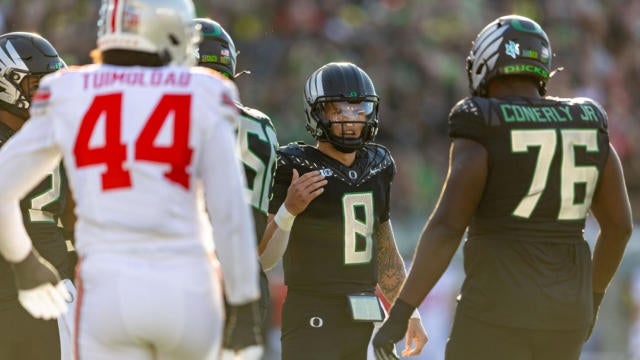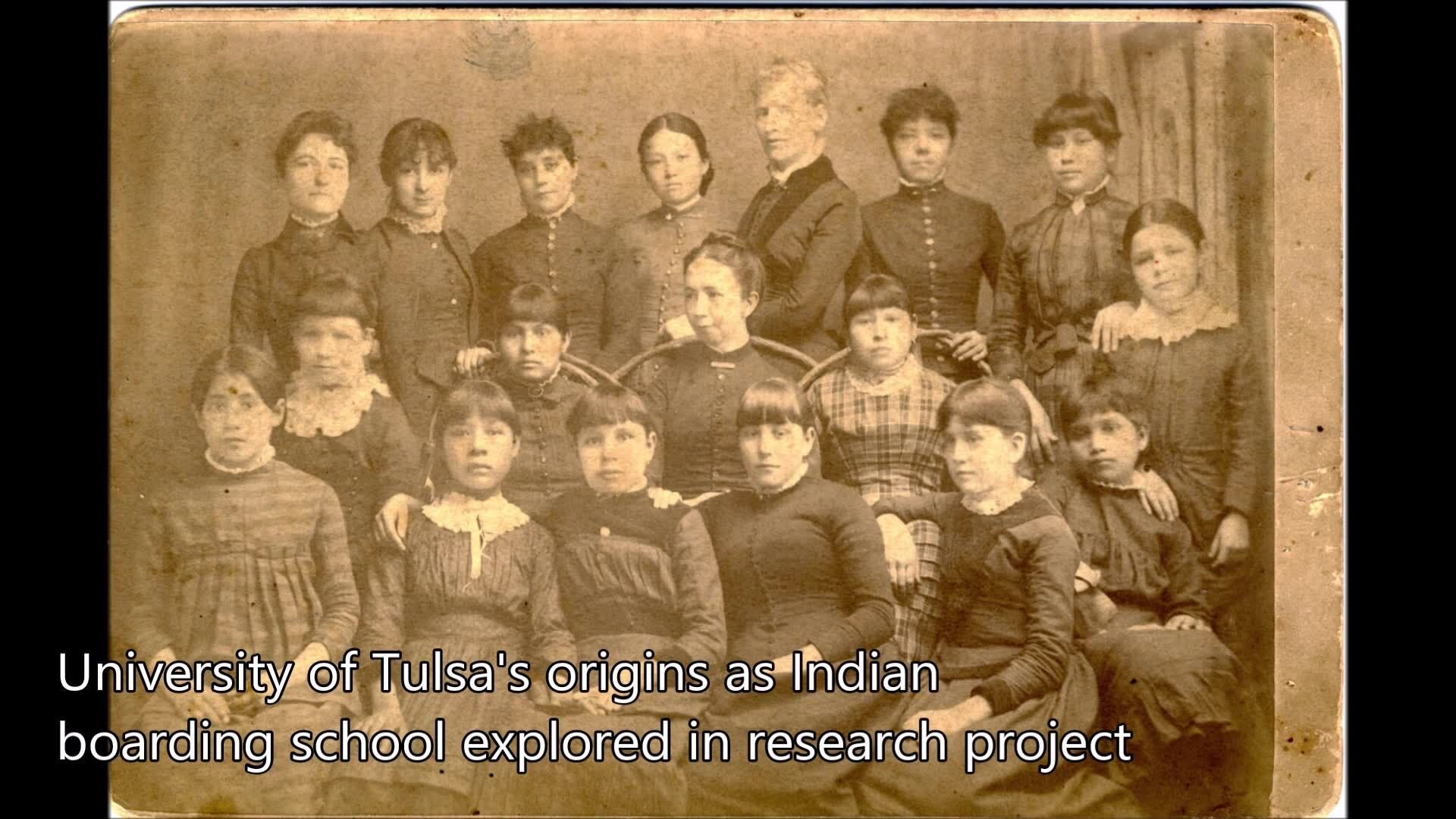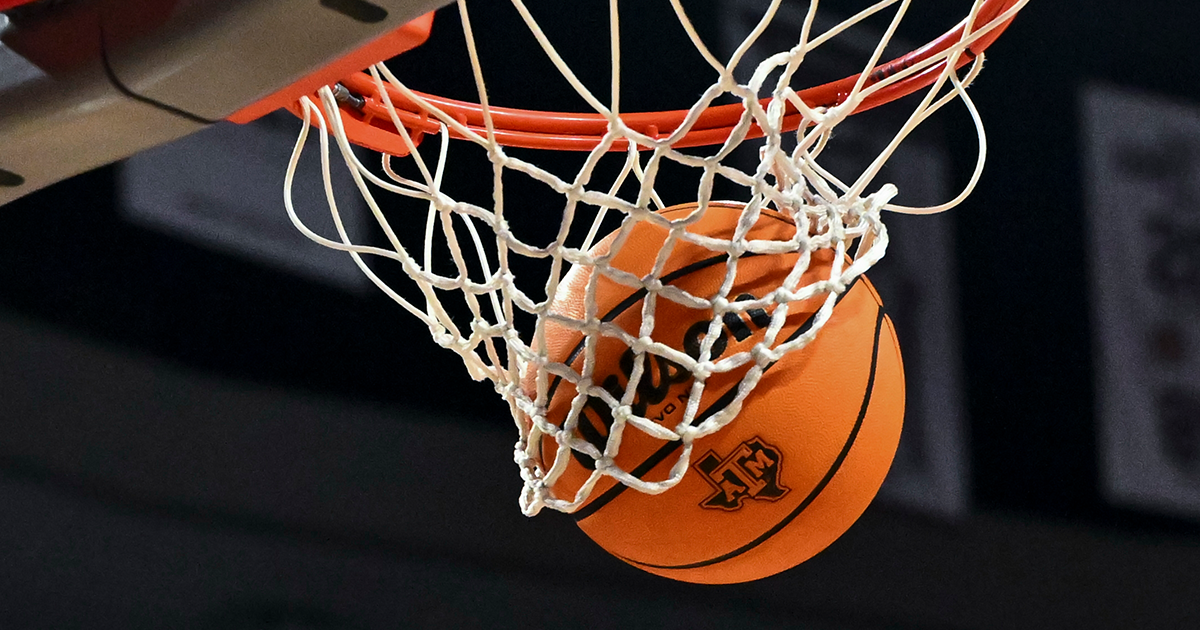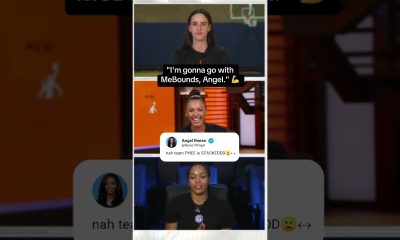NIL
Every SEC football team's projected NIL leader for 2025
As Name, Image and Likeness deals reshape college football, teams around the country are shelling out millions of dollars to field their 2025 rosters in hopes to reach the College Football Playoff and ultimately a shot at the national championship. This is especially true for college football’s most dominant conference. The SEC – winners of […]


As Name, Image and Likeness deals reshape college football, teams around the country are shelling out millions of dollars to field their 2025 rosters in hopes to reach the College Football Playoff and ultimately a shot at the national championship.
This is especially true for college football’s most dominant conference. The SEC – winners of 13 of the last 19 national titles, including three this decade – features two of the top-four highest-valued players in the country and six of the top-15.
Here’s how the SEC’s 16 teams stack up when listed by their highest-valued players, per On3 NIL valuations, ahead of the 2025 season.
True freshman quarterback Kamario Taylor signed with Mississippi State as a four-star recruit when coming out of Noxubee County High School in Macon, Mississippi, in class of 2025. Ranked as the nation’s No. 8 quarterback signee, he leads the Bulldogs with an NIL valuation of $487,000.
Kentucky signed defensive lineman David Gusta in the offseason after he entered the transfer portal following four seasons at Washington State. The San Bernardino, California, native was ranked as the No. 2 transfer player at the position and holds an NIL valuation of $701,000 entering his final season.
No Tennessee signee was as highly-touted as five-star offensive tackle David Sanders Jr., who joined the Volunteers as the No. 3 player at the position and a top-15 recruit in the class of 2025. The Providence Day School (Charlotte, North Carolina) product already leads the way with a $891,000 NIL valuation.
Former USC standout Zachariah Branch transferred to Georgia in the winter. The former five-star was rated as the No. 1 wide receiver in the class of 2023 when coming out of high school powerhouse Bishop Gorman. Branch tops all Bulldogs with an NIL valuation of $1.1 million as a junior.
Missouri signed former Penn State quarterback Beau Pribula in the winter after Nittany Lions’ starter Drew Allar announced his return in 2025. Pribula, out of York, Pennsylvania, has 19 total touchdowns to one interception over two seasons and leads the Tigers with a $1.1 million NIL valuation as a junior.
Ole Miss offensive lineman Diego Pounds started at left tackle in nine games last season after spending two seasons at North Carolina. The former three-star recruit out of Raleigh, North Carolina, leads all Rebels with a $1.1 million NIL valuation.
NC State transfer wide receiver Kevin Concepcion joined Texas A&M in the winter as the No. 18 overall transfer and the No. 5 transfer player at the position. The former ACC Rookie of the Year (2023) paces all Aggies with an NIL valuation of $1.2 million.
Vanderbilt quarterback Diego Pavia earned SEC Newcomer of the Year honors in 2024 after transferring from New Mexico State. The former unranked recruit totaled 28 touchdowns to four interceptions, leading the Commodores to their best season since 2013. He paces the program with an NIL valuation of $1.6 million.
Jackson Arnold transferred from Oklahoma in the winter after signing with the Sooners as a five-star recruit in the 2023 class. With 17 appearances and five starts under his belt, Arnold leads Auburn with an NIL valuation of $2 million.
Taylen Green posted a standout season at Arkansas in 2024 after spending the previous three seasons at Boise State. The Lewisville, Texas, native passed up the NFL Draft to return to the Razorbacks as a senior and leads the team with a $2.7 million NIL valuation.
Alabama wide receiver Ryan Williams lived up to his five-star pedigree with a Freshman All-American season in 2024. The Mobile, Alabama, native already leads the Crimson Tide with an NIL valuation of $2.7 million.
John Mateer transferred to Oklahoma after a breakout 2024 season at Washington State. Mateer, ranked as the No. 3 transfer quarterback, followed former Cougar’s offensive coordinator Ben Arbuckle to the Sooners and leads the program with a $2.7 million NIL valuation.
Florida quarterback DJ Lagway signed with the Gators as the No. 1 quarterback in the class of 2024 and was thrown into the fire to replace injured Graham Mertz last season. The Willis, Texas, native certainly answered and led Florida to its best season since 2020. Lagway leads the way with a $3.7 million NIL valuation.
South Carolina quarterback LaNorris Sellers earned SEC Freshman of the Year and Freshman All-American honors in 2024 after the Florence, South Carolina, native led the Gamecocks to their best season since 2017. The former three-star recruit paces the team with a $3.7 million NIL valuation.
LSU’s Garrett Nussmeier led the Tigers to a nine-win season in 2024 as a first-year starter after waiting his turn behind Heisman Trophy winner Jayden Daniels. Nussmeier returns as the SEC’s veteran passer with 31 games under his belt and leads LSU with a $3.8 million NIL valuation.
While Texas quarterback Arch Manning has just two starts under his belt entering his redshirt sophomore season, his family legacy and talented five-star pedigree make him the highest-valued player in college athletics. Manning, with the starting nod in 2025, holds an NIL valuation of $6.8 million.
NIL
Mike Gundy’s Vision for a Reformed College Football Landscape
Oklahoma State’s Mike Gundy, entering his 21st season as head coach, aims to improve the state of college football before he steps away. He believes the sport faces challenges with the transfer portal and NIL initiatives affecting fan engagement and revenue disparities. Gundy advocates for a structured leadership model, suggesting a commissioner to oversee fair […]
Oklahoma State’s Mike Gundy, entering his 21st season as head coach, aims to improve the state of college football before he steps away. He believes the sport faces challenges with the transfer portal and NIL initiatives affecting fan engagement and revenue disparities. Gundy advocates for a structured leadership model, suggesting a commissioner to oversee fair revenue sharing and balance among Power Conference teams to ensure the sport’s viability and appeal. He remains optimistic about coaching while hoping to implement his solutions for improvement.
By the Numbers
- Gundy has been the head coach at Oklahoma State for 21 years.
- U.S. college football has seen numerous coaching changes and conference realignments in recent years, impacting revenue and team composition.
State of Play
- The college football landscape is undergoing significant changes due to NIL and the transfer portal.
- Gundy believes fan engagement is waning due to frequent player turnover.
What’s Next
If Gundy’s proposed leadership structure gains traction, it could lead to meaningful discussions around equity and sustainability in college football. His insights may influence how officials approach ongoing issues surrounding player payments and team competitiveness.
Bottom Line
Gundy’s call for a unified leadership in college football highlights the urgent need for structural changes to maintain fan interest and enhance the sport’s future viability. Solutions must prioritize fairness across conferences to ensure college football remains compelling and financially viable.
NIL
With the NIL floodgates wide open, the soul of college sports is eroding
Kentucky’s BBN on the precipice of a new era in college sports A crisp fall day in Lexington. Cornhole bags thud against wooden boards in the Kroger Field parking lot. Laughter carries in the cool air. Someone’s playing John Anderson from a truck bed. Strangers become friends because they wear the same shade of blue […]

Kentucky’s BBN on the precipice of a new era in college sports
A crisp fall day in Lexington. Cornhole bags thud against wooden boards in the Kroger Field parking lot. Laughter carries in the cool air. Someone’s playing John Anderson from a truck bed. Strangers become friends because they wear the same shade of blue sipping from red solo cups.
This is what college sports were meant to be.
College sports has many problems to solve like the NIL but leaders want to mess with the one gold situation the @MarchMadnessMBB . Yes spend time fixing the problems with the NIL & transfer portal which have created CHAOS ! via @ESPN App https://t.co/TbcdfHpy05
— Dick Vitale (@DickieV) August 1, 2025
Not contracts. Not Transfer Portals. Not subscription fees to get closer to the team you already love.
There was once a purity to college athletics. A Sunday afternoon in March wasn’t about contracts or new NIL opportunities—it was about Selection Sunday watch parties. It was the ache in your stomach when your team’s bubble burst, or the explosion of joy when your name popped up on the bracket. It was about campus pride, alumni devotion, and that unspoken bond between generations of fans.
Now? It’s harder to recognize.
With NIL collectives and coaches calling for fans to “pony up,” and players treating the portal like a revolving door, the soul of college sports is on the line. Not gone completely—but eroding fast.
“texas tech is ruining college sports”
“texas tech needs to be investigated what they’re doing should be illegal”
“what texas tech is doing in NIL is wrong”
meanwhile: pic.twitter.com/71RuLFkON1
— 🦅 future dogtor felipe 🦅 (@felipe4prez) June 14, 2025
The House v. NCAA settlement cracked the dam wide open. Schools will soon pay athletes directly, essentially legalizing revenue sharing in the Power 5. On its own, that might be progress. But pair it with unrestricted transfers and a pay-to-play arms race, and the result isn’t college sports—it’s something closer to minor league professional ball.
Programs are rebuilt yearly, not developed. Jerseys don’t stay hung in lockers—they’re reused like name tags at a networking event. Even the idea of the four-year student-athlete at one school is slipping into nostalgia. Rylan Griffen will be playing for Texas A&M basketball this fall, his third school in 4 years. Zach Calzada will be on his 4th team in 7 years at Kentucky.
Some welcome this. Others—administrators like Mitch Barnhart, coaches like Tara VanDerveer, fans across every conference—are sounding the alarm. Because what made college sports special wasn’t just the talent. It was the tradition, the continuity, the sense of community.
And while the athletes deserve everything they’ve earned, the pay-for-play that NIL has become has changed the game forever. And while some champion this change in how things are done, the rest of us are left wondering:
When did we lose the game we fell in love with? Will it ever come back?
NIL
AJ McCarron blasts NCAA for having multiple transfer portal windows: ‘Outrageous’
AJ McCarron blasted the NCAA for having multiple transfer portal windows for football season. The former Alabama quarterback said there has to be one to even attempt at reducing tampering and player movement, that would be out of the ordinary of course. McCarron, for context, referenced Wisconsin suing Miami for tampering with transfer Xavier Lucas. […]

AJ McCarron blasted the NCAA for having multiple transfer portal windows for football season. The former Alabama quarterback said there has to be one to even attempt at reducing tampering and player movement, that would be out of the ordinary of course.
McCarron, for context, referenced Wisconsin suing Miami for tampering with transfer Xavier Lucas. Lucas alleged that the Badgers’ staff refused to enter his name into the portal in December when he left Wisconsin and enrolled at Miami in January.
Right now, there’s a winter portal and a spring portal for football. An extreme example would be an early enrollee freshman coming to a program in December or January and then transferring to a new school three months or so later before even starting their first season.
“Having these multiple transfer portal windows (is) just awful,” McCarron said on The Dynasty. “I don’t understand it. It’s one of the stupidest things that the NCAA is allowing right now. There should be one only window, and it’s at, just say, January, towards the end of the year, after bowl games, whatever it is like, the fact that there’s multiple is outrageous.
“Now there’s already tampering going on. Like you gotta be a complete dummy to think that no other university is tampering … For Xavier (Lucas’) case, they said it was like an uncle or a family member that met with a university Miami coach and hosted them at their house one week, so one weekend, and that’s how they came up with a deal. So how do you track any of this? How do you make sure guys are following rules? There’s no way to do it right?”
McCarron went on to say how there are so many loopholes to the current transfer portal rules. Throw NIL into the mix and boy, you’ve got the wild west.
Tampering has become a massive topic of concern for coaches in recent years. NIL and the Transfer Portal have created massive roster movement, and that incentivizes teams to speak to players to get them to enter the portal, knowing the offer they’ll receive once they enter.
“There’s so many avenues with social media, platforms, burner phones, there’s so many things that you can go around and find a way to sneak around and tamper with with athletes,” McCarron said. “Listen, for the sake of college football, they need this ruling to go in the favor of Wisconsin. So there’s an actual set of rules that they have to go by. If it’s not, it’s just going to make it more of the wild wild west.”
NIL
Youth extravaganza to offer learning opportunities and fun at Native Omaha Days
Youth extravaganza to offer learning opportunities and fun at Native Omaha Days Sunday Youth extravaganza to offer learning opportunities and fun at Native Omaha Days THE SEASON. 737 NOW AND NATIVE OMAHA DAYS IS IN FULL SWING AND THERE IS SOMETHING TO DO FOR EVERYONE THIS WEEK. AND THAT INCLUDES THE KIDDOS. TODAY’S YOUTH EXTRAVAGANZA […]


Youth extravaganza to offer learning opportunities and fun at Native Omaha Days Sunday
Youth extravaganza to offer learning opportunities and fun at Native Omaha Days
THE SEASON. 737 NOW AND NATIVE OMAHA DAYS IS IN FULL SWING AND THERE IS SOMETHING TO DO FOR EVERYONE THIS WEEK. AND THAT INCLUDES THE KIDDOS. TODAY’S YOUTH EXTRAVAGANZA OFFERS NOT JUST FUN, BUT DIFFERENT LEARNING OPPORTUNITIES. KETV NEWSWATCH SEVEN’S EDDIE MESSEL IS LIVE WITH MORE. GOOD MORNING EDDIE. YEAH, GOOD MORNING. AND LISTEN, THERE’S A TON OF THOSE OPPORTUNITIES AND WE’RE EXCITED FOR IT. BUT BEFORE WE GET TO THOSE OPPORTUNITIES, JOINING ME NOW IS GOING TO TALK A LITTLE BIT MORE ABOUT. WE’RE GOING TO START WITH THE FUN STUFF THOUGH WILLIAM KING. HE IS THE FOUNDER OF THE YOUTH EXTRAVAGANZA THAT’S GOING TO HAPPEN HERE TODAY. WHAT DO YOU GOT HERE TODAY WILLIAM? WATER GUN. YOU KNOW, I’M GETTING READY FOR MY GRANDKIDS. YOU KNOW, I’M TAKING SOME SOME STUFF OUT ON THEM. WE’RE GOING TO HAVE A BIG OBSTACLE COURSE FOR FOR THE BIG KIDS. ALSO TO RUN AROUND AND CHASE THE LITTLE KIDS FOR ALL THE STUFF THAT THEY DON’T PAY ATTENTION TO. WE GET THEM TODAY. MAN, I’M GETTING EXCITED. YOU SEE, ALREADY GOT MY PROPS. I GOT TWO OF THESE ALREADY, SO WE’RE HOPING YOU BRING YOURS OUT. IF YOU COME OVER HERE, I’M GONNA GET YOU TODAY. I’M GONNA GET YOU. ALL RIGHT, WELL, WE GOT THAT FUN STUFF ON THE OUTSIDE. INSIDE. I WANT TO TALK ABOUT SOME COOL OPPORTUNITIES FOR THE YOUTH TO LEARN SOMETHING I THINK IS SUPER INTERESTING. THAT NIL SEMINAR. TALK A LITTLE BIT MORE ABOUT WHAT SOME OF THE YOUTH CAN LEARN FROM THAT. WELL, WE GOT LAMAR MCMORRIS COMING IN TO TALK ABOUT THE NIL. YOU KNOW HIS SON YOU KNOW PLAYED AT BELLEVUE STATE CHAMPIONSHIP IN NEBRASKA. AND SO HE WANTED TO MAKE SURE THAT OUR YOUNG PEOPLE ARE PUTTING THE BEST POSITION. YOU KNOW BECAUSE THIS OPPORTUNITY IS ONCE IN A LIFETIME. AND SO WE WANT TO MAKE SURE THAT THEY ARE MAKING GREAT DECISIONS AS, AS THEY GO THROUGH THEIR THEIR COLLEGE CAREER. AND SO FOR THOSE YOUNG ATHLETES, HE’S HE’S GOT SOMETHING SET UP FOR FOR THEM TO BENEFIT 100% FROM THAT NEW NIL SYSTEM. ALRIGHTY, WILLIAM, WE’RE GOING TO HAVE MORE FROM WILLIAM ON COMING UP. BUT AGAIN, YOU GOT THE WATER FUN OUT HERE TODAY. THE NIL SEMINAR, AS WELL AS AN ENTREPRENEUR EXPO. WE’LL SEND IT BACK TO YOU GUYS IN THE STUDIO. ONE MORE COMING UP HERE LATER THIS MORNING. WATCH OUT EDDIE. HE’S GOING TO GET YOU. THANK YOU. 7.39 NOW. AND TODAY IS THE FINAL DAY OF THE SANTA LUCIA FESTIVAL. THIS IS THE 101ST YEAR CELEBRATING FAITH, FOOD AND ITALIAN CULTURE IN LITTLE ITALY. ALL WEEKEND SO FAR, PEOPLE HAVE CELEBRATED TRADITIONS LIKE MAKING AN ITALIAN RECIPE FROM SCRATCH. ORGANIZERS SAY THIS EVENT IS A
Advertisement
Youth extravaganza to offer learning opportunities and fun at Native Omaha Days Sunday
Youth extravaganza to offer learning opportunities and fun at Native Omaha Days
With two days left of the Native Omaha Days 2025 festival, Sunday will have an opportunity for youth to learn life skills as well as have some fun.The Youth Extravaganza will take place at the Schenzel Community Center and Hope Center for Kids. There will be water fun and adventures outside while inside kids will have the chance to learn at an entrepreneur expo as well as a NIL seminar. The Youth Extravaganza will start at 2 p.m. Sunday and end at 8 p.m.
With two days left of the Native Omaha Days 2025 festival, Sunday will have an opportunity for youth to learn life skills as well as have some fun.
The Youth Extravaganza will take place at the Schenzel Community Center and Hope Center for Kids. There will be water fun and adventures outside while inside kids will have the chance to learn at an entrepreneur expo as well as a NIL seminar.
Advertisement
The Youth Extravaganza will start at 2 p.m. Sunday and end at 8 p.m.
NIL
Kansas transfer, former Vanderbilt guard Noah Shelby commits to Texas A&M
Former Kansas guard Noah Shelby has committed to Texas A&M, via the NCAA Transfer Portal, per The Athletic‘s Tobias Bass. Shelby transferred to Kansas last offseason and redshirted during the 2024-25 season. Shelby was an invited walk-on for the Jayhawks. He began his college career at Vanderbilt, where he made 14 appearances. Shelby averaged 3.7 points […]



Former Kansas guard Noah Shelby has committed to Texas A&M, via the NCAA Transfer Portal, per The Athletic‘s Tobias Bass. Shelby transferred to Kansas last offseason and redshirted during the 2024-25 season.
Shelby was an invited walk-on for the Jayhawks. He began his college career at Vanderbilt, where he made 14 appearances. Shelby averaged 3.7 points in 9.1 minutes per game for the Commodores.
Shelby transferred to Rice after his lone campaign at Vanderbilt. At Rice, Shelby saw action in 31 games and started once. He averaged 3.9 points and 1.0 rebounds in 11.9 minutes per game while shooting 35.1% from the field.
Shelby served as a practice player for the Jayhawks last season. He played high school basketball at Greenhill School (TX), where he was a four-star prospect. He was the No. 125 overall player and No. 20 shooting guard in the 2022 recruiting cycle, according to the Rivals Industry Rankings.
He is the 11th transfer Texas A&M has landed this offseason. Most notably, the Aggies reeled in commitments from former Creighton guard Pop Isaacs and former Indiana forward Mackenzie Mgbako.
Noah Shelby isn’t the only former Kansas player to join the Aggies. Kansas shooting guard Rylan Griffen also transferred to Texas A&M this offseason.
The Aggies are entering a new era after head coach Buzz Williams left the program to take over at Maryland. In turn, the school hired former Samford head coach Bucky McMillan to take the reins.
McMillan was Samford‘s head coach for the past five seasons, amassing a 99-52 overall record during his tenure. He had his best season at Samford in the 2023-24 campaign when he led the Bulldogs to a 29-6 record, a 15-3 mark in conference play, a Southern Conference regular-season title, a conference tournament championship and an NCAA Tournament appearance.
McMillan also guided Samford to a SoCon regular-season championship in the previous season. For his efforts, McMillan won the Southern Conference Coach of the Year Award three consecutive seasons (2022-24).
McMillan’s teams are known for their fast-pace. McMillan’s entertaining style of play has affectionately come to be known as “Bucky Ball.” Samford averaged 82.9 points per game last season, the 14th-most in the country.
McMillan’s teams don’t slow down on defense, constantly pressing their opponents. Samford ranked in the top 20 in the country for opponent turnover percentage the past two seasons.
Now, McMillan will look to carry over his success to the Power Four level. With players like Shelby by his side, he should have a strong roster entering his debut campaign at the helm of the Aggies.
NIL
F
Sometimes, the key to interpreting the law lies not in what it says—but in what it leaves unsaid. In the summer of 2021, shortly after the NCAA adopted its interim name, image, and likeness (NIL) policy, Benjamin Snyder, a North Carolina-based immigration lawyer, received a call from a friend—an agent representing several college basketball coaches. […]



Sometimes, the key to interpreting the law lies not in what it says—but in what it leaves unsaid.
In the summer of 2021, shortly after the NCAA adopted its interim name, image, and likeness (NIL) policy, Benjamin Snyder, a North Carolina-based immigration lawyer, received a call from a friend—an agent representing several college basketball coaches. The agent had a pressing question: How could his coaching clients include international athletes in the evolving NIL landscape?
At the time, the prevailing belief was that international athletes—most of whom held F-1 student visas—were categorically excluded. U.S. immigration law largely prohibits F-1 visa holders from engaging in employment involving the performance of labor or services, and many assumed NIL deals with third parties fell squarely into that category. After all, the distinction between NIL and impermissible pay-for-play was supposed to hinge on what the athletes were doing to earn the money.
The conventional wisdom, then, held that international athletes could only participate in NIL activities while physically outside the United States.
But Snyder read the situation differently. After examining the legal landscape, he concluded that many NIL deals qualified as passive income rather than active employment—income that F-1 visa holders are not explicitly barred from receiving. Based on this interpretation, Snyder argued that international athletes could legally accept third-party NIL payments even while residing in the U.S.
That analysis proved to be welcome news to college coaches, especially in sports like basketball, who were eager to recruit international talent that might otherwise have turned professional overseas.
Snyder has since emerged a central figure in efforts to help Power 4 schools include international athletes in the revenue-sharing plans outlined in the House v. NCAA settlement. He says he has advised roughly a dozen institutions across the Big Ten, ACC and Big 12, offering guidance on how to structure contracts and ensure compliance with immigration law.
One key consideration: If revenue-sharing payments from schools to athletes are to be classified as passive income for immigration purposes, then recipients must properly withhold taxes in accordance with that classification.
Still, the first—and often most difficult—step is convincing campus international student services offices, which function as frontline immigration enforcers. But to date, he’s had nobody reject his guidance.
Immigration law, broadly speaking, is a complex and often contentious area of American jurisprudence. Snyder concedes that, in the absence of clear case law or administrative guidance, practitioners are largely navigating in the dark. Even so, he maintains that his legal theory would stand up well in court. In formulating his position, Snyder analyzed distinctions in the U.S. tax code between active earned income and passive royalty income—the latter being exempt from self-employment tax.
A critical precedent came from the 1983 Kramer v. Commissioner case, which explored whether royalty income qualified as earned income under the minimum tax rules. The Tax Court found that 70% of former tennis pro Jack Kramer’s endorsement deal with Wilson, based on royalties from racquets and merchandise bearing his name, constituted royalties tied to commercial use of his NIL. The remaining 30% was deemed compensation for personal services.
“That helps us demarcate where passive income ends and employment begins,” Snyder explained. “It’s in the performance of some activity, including activity to promote the product or the merchandise they are selling.”
Some leagues seem to be incorporating Snyder’s view into policies, at least passively. While the Big Ten Conference has taken no official stance on whether F-1 visa holders may receive House payments, it deliberately structured its template revenue-sharing agreement as a passive license, in part to accommodate international athletes.
However, not everyone is buying Snyder’s argument.
Ksenia Maiorova, a Florida-based lawyer who specializes in advising international college athletes, dismissed Snyder’s position as a “legal fiction.”
“I like Ben, he is a really nice guy, but I vehemently disagree with him on this legal position,” Maiorova said. “I believe it is form over substance.”
For Maiorova, the heart of the issue lies in the visa approval process itself—controlled by individual consular officers who wield broad discretion. And under the Trump administration’s heightened scrutiny, that discretion can become a serious obstacle.
Her concerns are shaped in part by conversations with former consular officers like Chris Richardson, who previously served as a visa chief for the State Department and conducted tens of thousands of visa application interviews. Richardson told Sportico that if he were assessing a prospective international college athlete with a revenue-sharing deal, he would have “a lot of concerns.”
“Most of these deals are being structured as passive income, and maybe that will work for some officers, but it doesn’t seem to pass the smell test,” said Richardson, now president and general counsel of immigration consultancy BDV Solutions. “You are literally doing the most active physical labor possible, and you are being paid for it.”
At the same time, Richardson acknowledged that immigration law often lags behind real-world developments. Some consular officers, he noted, may try to account for that.
So, would he approve an F-1 visa application involving athlete revenue-sharing?
“I would probably say yes,” Richardson admitted. “I would probably try to look at it as passive as possible. But for all officers, it is a bit of a stretch.”
Too much of a stretch, in Maiorova’s view.
Still, she concedes that her warnings are “not being heeded.” That was made clear at last month’s annual convention of the National Association of College Directors of Athletics (NACDA), where F-1 visas and revenue-sharing payments were a major topic of conversation.
“Institutions have come to believe—and I don’t think unreasonably—that NIL enforcement by the NCAA has no teeth,” she said. “Schools have gotten away with doing things the NCAA has specifically prohibited … and there has been little practical recourse.”
In this case, though, the enforcer isn’t the NCAA, or even the newly formed College Sports Commission. It’s U.S. Immigration and Customs Enforcement (ICE).
One Power Four school’s athletics compliance official, speaking anonymously, voiced fears that the issue could become a flashpoint in the broader immigration debate. He said his department has even conjured the possibility of ICE agents pulling an athlete off the court during a televised game.
In the early months of his second term, President Donald Trump has repeatedly attacked higher education, most notably through his administration’s legal battles with Harvard.
Yet, as Richardson pointed out, many of the universities now preparing to distribute House payments to F-1 athletes are public institutions in Trump-supporting states, complicating the politics of enforcement.
Snyder, for his part, remains confident in his legal reasoning but recognizes the inherent unpredictability of the system.
“I want to make clear that this analysis and application of law is rock solid,” he said. “But generally speaking, there is so much in the world of immigration that is subject to executive branch discretion and varying interpretation.”
With the current visa application cycle—typically starting in May—already underway, Snyder said that none of the F-1 applicants at his client schools have been denied. Several international athletes, he added, are already on campus.
Both Maiorova and Richardson believe the more secure path for athletes seeking revenue-sharing deals would be to apply for P-1A work visas, which are designed for “internationally recognized athletes.” The problem? That process is far more burdensome and not intended for students whose primary purpose is academic.
Maiorova is currently co-representing LSU women’s basketball player Last-Tear Poa, an Australian national, in a lawsuit against U.S. Citizenship and Immigration Services (USCIS) over its denial of her P-1 visa application. A federal judge is currently considering both sides’ motions for summary judgment.
Snyder noted that he, too, has represented elite international athletes whose P-1 applications were rejected.
Under the P-1A visa, professional athletes may enter the U.S. to compete in a specific event and participate in related promotional activities. That’s why foreign NBA players, for instance, can legally appear in commercials. But in the context of college athletics, Snyder said, U.S. immigration officials tend to view such promotional efforts as beyond the scope of competition—as “extra-extra-curricular activities,” in his words.
“We feel our position is very consistent with the very little bit we know about how USCIS thinks about this so far,” Snyder said. “But it’s still a very new and emerging area.”
-

 Sports2 weeks ago
Sports2 weeks agoAdapti, Inc. (OTC
-

 Sports3 weeks ago
Sports3 weeks agoVolleyball Releases 2025 Schedule – Niagara University Athletics
-

 High School Sports1 week ago
High School Sports1 week ago100 days to men's college basketball
-

 Rec Sports2 weeks ago
Rec Sports2 weeks agoFlorida woman, 20, accused of pepper-spraying rich men in Miami Beach hotels, stealing their luxury watches
-

 Health2 weeks ago
Health2 weeks agoJoliet West alum's basketball clinic focuses on mental health as well as physical performance
-

 Youtube3 weeks ago
Youtube3 weeks agoShe will remember this forever 💪🙌
-

 Youtube3 weeks ago
Youtube3 weeks agoAngel Reese on Team Collier 👀
-

 Youtube3 weeks ago
Youtube3 weeks agoNikola Jokic was hyped after his horse won a race 🏆
(via @arenasporttv/TT)
-

 Youtube3 weeks ago
Youtube3 weeks agoDouble play but make it The Show 🔥
-

 Youtube3 weeks ago
Youtube3 weeks agoMichael Conforto hit the perfect blue on the meter with this throw to home 😮































